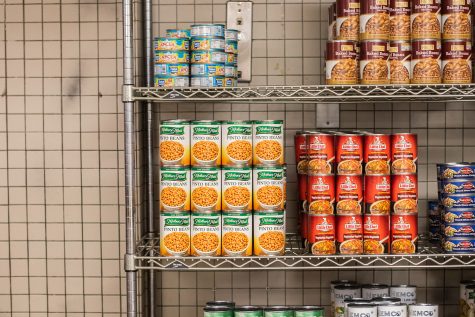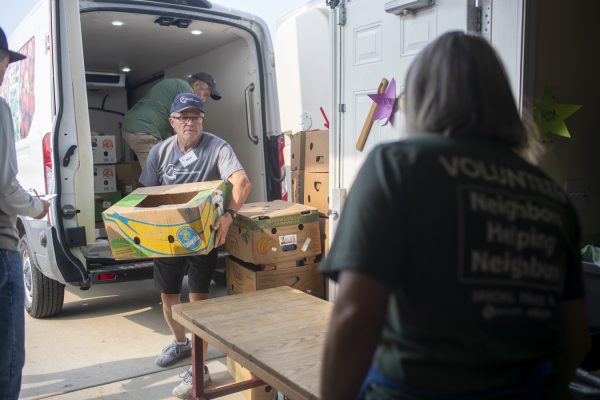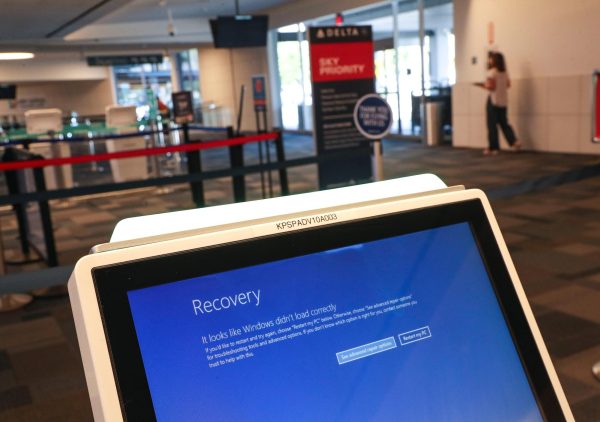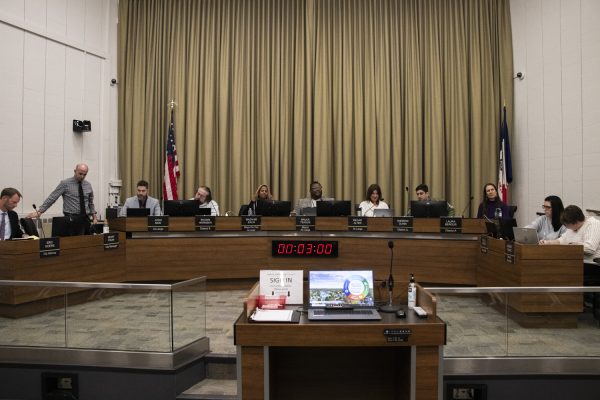UIHC Home Treatment Team works to reduce COVID-19 hospitalizations
The Home Treatment Team has seen about 1,300 patients since March. They’re able to reduce the need for patients to be hospitalized using virtual check-ins where patients report their vitals.
University of Iowa Hospitals and Clinics are seen on Tuesday, June 23, 2020.
December 2, 2020
As hospitalizations and positive coronavirus cases continue to rise in Iowa, University of Iowa Hospitals and Clinics is utilizing the Home Treatment Team, a model that allows health care providers to check in on patients from their homes.
As of Dec. 2, there are 57 COVID-19 adult inpatients in UIHC. The total number of adults who have been hospitalized for COVID-19 this year is 1,037.
In March, Hospitalist Medical Director Bradley Manning and Clinical Assistant Professor of Internal Medicine Andrew Bryant formed a team of hospitalists at UIHC to learn more about the virus and provide support for patients. They started the program so they could monitor patients who went home with positive COVID-19 cases, Manning said.
As case counts continued to rise over the next several months, they noticed how important this program would be in keeping hospitalization rates down, Manning said. Bryant said they began focusing on patients who were at higher risk.
“We’re trying to keep the hospital open and keep our beds open,” Bryant said. “If we can still provide high-level care for a patient at home, we should do that.”
The group of about 50 different physicians, nurse practitioners, and hospitalists check in on the patients, Bryant said. He said they have about two to six different providers make calls to patients to ask about their vitals each day.
Patients who participate in this program are first diagnosed by the UIHC Influenza-Like Illness clinic, Bryant said. He said the nurses in the clinic do an initial screening of the patient to look at their symptoms and see how they’re doing.
From there, patients who are lower risk or asymptomatic are followed by the Influenza-Like Illness team and the higher risk patients are followed by the Home Treatment Team, Manning said.
The team gives patients a blood pressure cuff, a pulse oximeter, and instructions so patients can track their blood pressure, heart rate, temperature, and blood oxygen levels, Bryant said. He said patients receive virtual visits with health care providers as frequent as daily.
“There is a huge education component with this – teaching them that first time how to do it and what’s normal and not normal,” Bryant said. “We’re giving them the tools to know what’s worrisome, what’s not, when to call us, and when to go to the hospital if needed.”
Bryant said they’ve seen a lot of success with this program, with about 95 percent of COVID-19 patients opting to participate in this program.
The admission rate is low, with about 8.5 percent of patients needing to be admitted to the hospital after using this program, Bryant said. He said the ICU admission rate is less than two percent.
“We are reducing unnecessary hospitalizations, because we are able to manage these patients at home,” Bryant said. “Not only are we getting patients in at a lower rate, patients are generally able to come in and not be critically ill.”
RELATED: University of Iowa to expand COVID-19 testing capacity for spring semester
The team has managed over 1,300 patients who have resolved their illness, Vice President for Medical Affairs Brooks Jackson said. He said they’ve only had five mortalities.
“The earlier you treat, and you can prevent progression, the better the outcome,” Jackson said. “Once you’ve progressed, you’re sustaining damage and it’s much harder to get people well.”
Since starting this program eight months ago, the team has made some changes to improve care for patients, Bryant said.
They’ve worked with UIHC Interpretation and Translation Services to provide information to patients in Spanish, French, and Swahili, Bryant said.
“We’re trying to make sure that we’re doing a good job in providing care for patients – we know there’s health-care disparities,” Bryant said. “Dependent on the patient’s ethnicity and race, we are able to tailor our care to make sure we’re providing the same quality of care that we do for anybody.”
Manning said they expect to see the effects of this change past the coronavirus pandemic.
“We had an opportunity to bring in a patient population to the University of Iowa that we maybe had trouble reaching out to. We’ve gained trust in these communities by reaching out and listening to patients to help them through this,” Manning said. “We hope that some of these connections that we’ve formed in these communities will allow us to provide excellent medical care in the future.”
Manning said they’ve also learned how to better get a patient’s family involved.
“We get the families involved so everybody participates in making sure the patients are hydrating, which we think is important in outcomes for individuals,” Manning said. “The phenomenon of listening to people, hearing what predominant symptoms are, and making sure we ask the next patient if they have those symptoms and if they’re able to handle it at home has improved our care.”




















